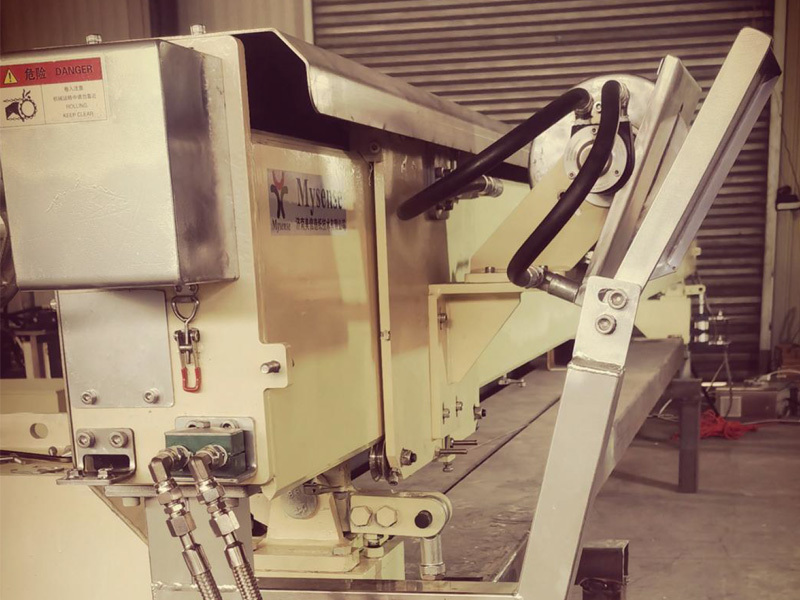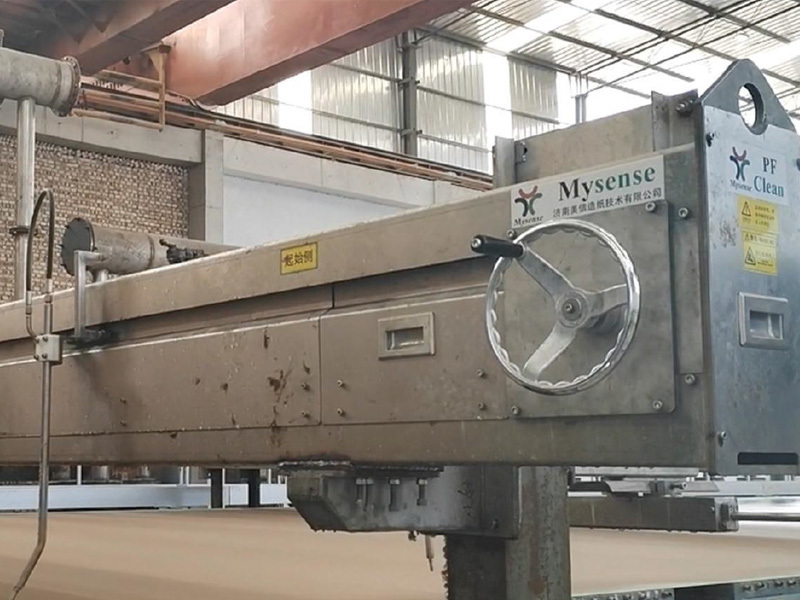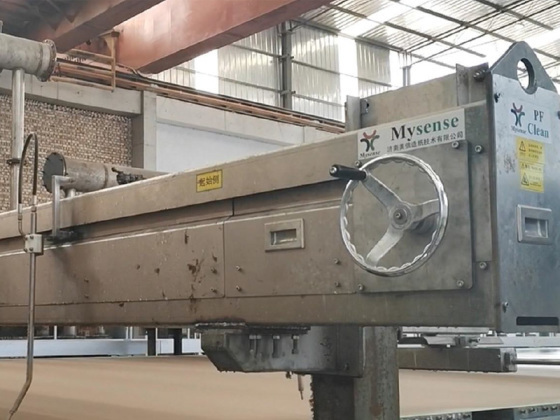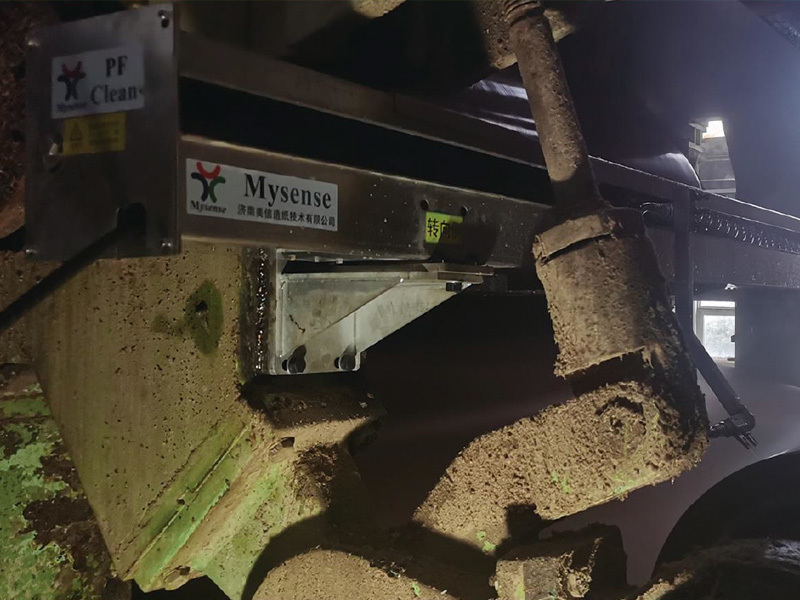Cutting-Edge Technology: The Future of Wet Section Tail Cutters
Published on:
2025-09-25 09:10
Cutting-Edge Technology: The Future of Wet Section Tail Cutters
Introduction to Wet Section Tail Cutters
Wet section tail cutters are essential tools in the manufacturing sector, particularly in paper and textile industries. These advanced machines are designed to ensure precise cutting of wet materials, significantly enhancing production efficiency. As industries evolve, the demand for innovative solutions continues to rise, leading to the development of cutting-edge technologies that define the future of wet section tail cutters.
The Importance of Wet Section Tail Cutters in Manufacturing
In an era where precision and efficiency are paramount, wet section tail cutters play a vital role. They help streamline manufacturing processes, reduce waste, and improve the quality of final products. Understanding the significance of these machines is crucial for manufacturers aiming to stay competitive.
Efficiency and Precision in Cutting
Modern wet section tail cutters are engineered for accuracy. With advanced sensors and control systems, they can perform intricate cuts with minimal error margins. This level of precision not only enhances product quality but also minimizes material waste, leading to substantial cost savings.
Versatility Across Various Industries
Wet section tail cutters are not limited to a single industry. Their versatility allows for application in various sectors, including textiles, packaging, and even food processing. This adaptability makes them indispensable tools in the manufacturing arsenal, capable of meeting diverse production needs.
Applications in the Textile Industry
In the textile industry, wet section tail cutters are used to cut fabric that is often treated with water or other solutions during the manufacturing process. The ability to cut while the material is in a damp state ensures that the fabric maintains its integrity and does not fray.
Use in Paper Production
In paper production, these cutters help achieve clean edges on sheets, regardless of their moisture content. This capability is crucial for maintaining quality standards in the final product, ensuring that sheets have uniformity and are ready for subsequent processing stages.
Technological Innovations in Wet Section Tail Cutters
The advancement of technology has revolutionized wet section tail cutters, making them more efficient and user-friendly. Key innovations include automation, enhanced blade technology, and smart monitoring systems.
Automation and Smart Technology
Automation has become a cornerstone of modern manufacturing. Many wet section tail cutters now feature automated systems that reduce the need for manual intervention. This not only increases productivity but also enhances safety by reducing the risk of human error.
Smart Monitoring Systems
Smart monitoring systems integrated within these machines allow operators to track performance metrics in real-time. This data-driven approach enables manufacturers to optimize operations, predict maintenance needs, and ensure consistent performance.
Advanced Blade Technology
The evolution of blade technology in wet section tail cutters has led to the development of sharper, more durable blades. These blades are designed to withstand the rigors of cutting wet materials, ensuring longevity and reducing replacement costs.
The Future of Wet Section Tail Cutters
As industries continue to push for higher efficiency and sustainability, the future of wet section tail cutters looks promising. Innovations are expected to further refine their capabilities, making them essential tools for modern manufacturing.
Integration of AI and Machine Learning
The potential integration of AI and machine learning into wet section tail cutters signifies a leap towards greater autonomy. These technologies can analyze cutting patterns, optimize settings, and even predict maintenance requirements, significantly enhancing operational efficiency.
Sustainability in Manufacturing
With a global focus on sustainability, future wet section tail cutters will likely incorporate eco-friendly technologies. This could include energy-efficient systems and materials that minimize environmental impact while maintaining high performance.
Customization and Flexibility
As customer demands shift towards customization, wet section tail cutters will evolve to offer greater flexibility. This adaptability will allow manufacturers to cater to niche markets, providing bespoke solutions that meet specific client requirements.
Challenges and Considerations in Implementing New Technologies
While the future of wet section tail cutters is bright, manufacturers must navigate several challenges when adopting new technologies. Understanding these challenges is critical for successful implementation.
Cost of Implementation
The initial investment in advanced wet section tail cutters can be significant. Manufacturers must assess their return on investment (ROI) to ensure that the benefits of modern technology outweigh the costs.
Training and Skill Development
As technology evolves, there is an increasing need for skilled operators who can effectively use advanced machinery. Training programs are essential for workforce development, ensuring that employees are equipped with the knowledge to operate and maintain cutting-edge wet section tail cutters.
FAQs about Wet Section Tail Cutters
1. What are wet section tail cutters used for?
Wet section tail cutters are primarily used in industries like textiles and paper production to cut wet materials with precision and efficiency.
2. How do modern wet section tail cutters improve efficiency?
Modern cutters utilize automation, smart monitoring systems, and advanced blades to enhance cutting precision, reduce waste, and streamline production processes.
3. Are wet section tail cutters versatile across different industries?
Yes, these machines are highly versatile and can be adapted for use in various industries, including textile, packaging, and food processing.
4. What innovations are shaping the future of wet section tail cutters?
Innovations such as AI integration, enhanced blade technology, and a focus on sustainability are expected to shape the future of wet section tail cutters.
5. How can manufacturers ensure a successful implementation of new wet section tail cutter technology?
Manufacturers should conduct a cost-benefit analysis, invest in employee training, and engage with vendors to ensure smooth integration of new technologies.
Conclusion
The landscape of wet section tail cutters is rapidly evolving, driven by advancements in technology and the increasing demands of modern manufacturing. These tools are pivotal in ensuring precision, efficiency, and versatility across various industries, from textiles to paper production. As we look to the future, the integration of AI, automation, and sustainability will redefine the capabilities of wet section tail cutters, ensuring they remain at the forefront of manufacturing innovation. Embracing these advancements will empower manufacturers to enhance their production processes, meet diverse customer needs, and maintain a competitive edge in an ever-changing market.
Latest News







